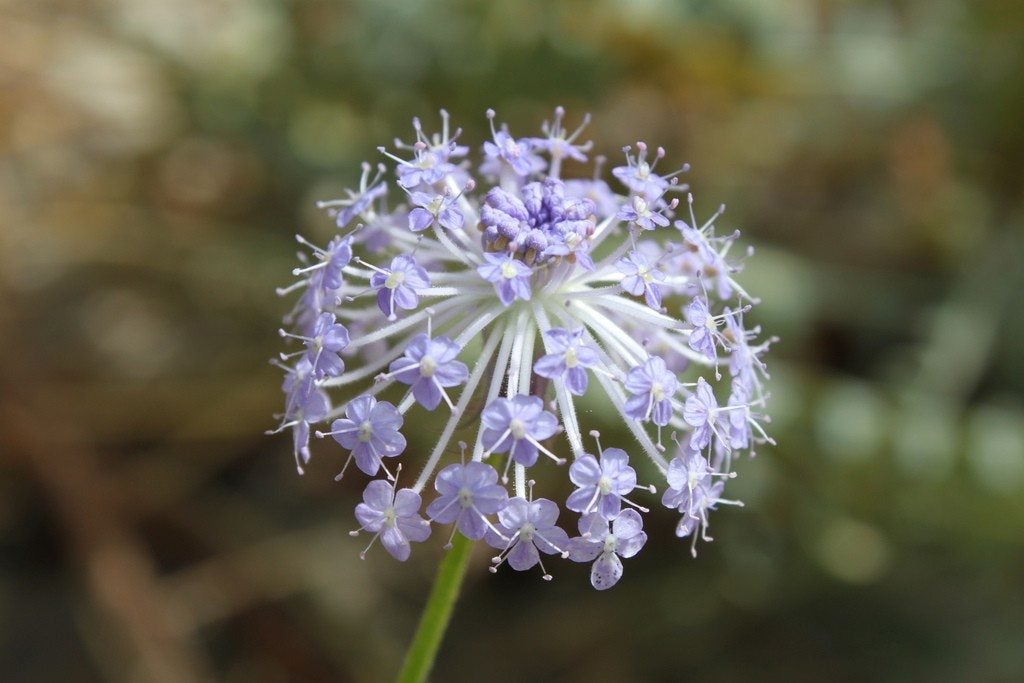Blue Lace Flower Info: Tips For Growing Blue Lace Flowers


Native to Australia, the blue lace flower is an eye-catching plant that displays rounded globes of tiny, star-shaped flowers in shades of sky-blue or purple. Each colorful, long-lasting bloom grows atop a single, slender stalk. Such a beautiful plant deserves a place in the garden. Let's learn more about growing blue lace flowers.
Blue Lace Flower Info
Blue lace flower plants (Trachymene coerulea aka Didiscus coeruleas) are low-maintenance annuals that are ideal for sunny borders, cutting gardens, or flower beds where they provide sweetly scented blooms from late summer until the first frost. These old-fashioned charmers also look great in containers. Mature height of the plant is 24 to 30 inches (61-75 cm.). Growing blue lace is an easy task if you can provide a sunny spot with average, well-drained soil. Feel free to enrich the soil and improve drainage by digging in a few inches (8 cm.) of compost or manure before planting. If you live in a hot, sunny climate, the plant appreciates a little afternoon shade. Shelter from strong winds is also welcome.
How to Grow a Blue Lace Flower
Blue lace flower plants are a cinch to grow from seed. If you want to get a jump on the growing season, plant the seeds in peat pots and move the seedlings to the garden about a week to ten days after the last frost in spring. Blue lace seeds need darkness and warmth to germinate, so put the pots in a dark room where temperatures are around 70 degrees F. (21 C.). You can also plant blue lace seeds directly in the garden. Cover the seeds lightly, then keep the soil moist until the seeds germinate. Be sure to plant seeds in a permanent location, as blue lace prefers to stay in one place and doesn't transplant well.
Care of Blue Lace Flowers
Thin the plants to a distance of about 15 inches (38 cm.) when the seedlings reach heights of 2 to 3 inches (5-8 cm.). Pinch the tips of the seedlings to encourage fully, bushy growth. Blue lace flowers need very little care once established-- just water deeply, but only when the soil feels dry.
Gardening tips, videos, info and more delivered right to your inbox!
Sign up for the Gardening Know How newsletter today and receive a free copy of our e-book "How to Grow Delicious Tomatoes".

A Credentialed Garden Writer, Mary H. Dyer was with Gardening Know How in the very beginning, publishing articles as early as 2007.
-
 Terrifically Tubular Flowers For Hummingbirds: 9 Tube-Flowered Plants To Attract Hummers
Terrifically Tubular Flowers For Hummingbirds: 9 Tube-Flowered Plants To Attract HummersGrowing tubular flowers for hummingbirds helps you create the optimum feeding conditions for your winged friends. Here are nine tubed delights for hummers
By Tonya Barnett
-
 How To Grow Hydroponic Tomatoes For Fresh Indoor Harvests – No Soil Required
How To Grow Hydroponic Tomatoes For Fresh Indoor Harvests – No Soil RequiredLearning how to grow tomatoes in water is easy and allows you to harvest fresh-home-grown produce in every season without any mess.
By Ellen Wells